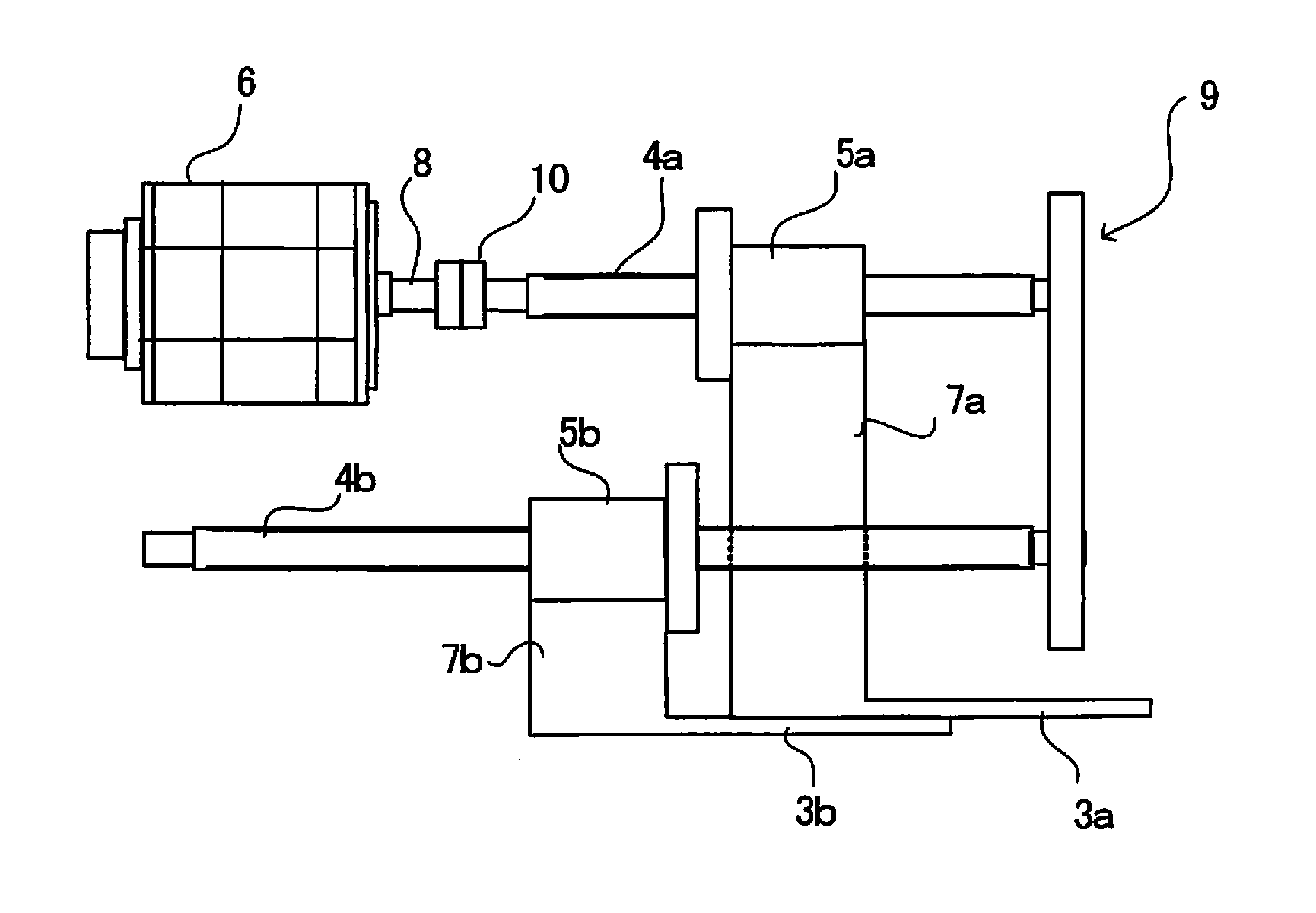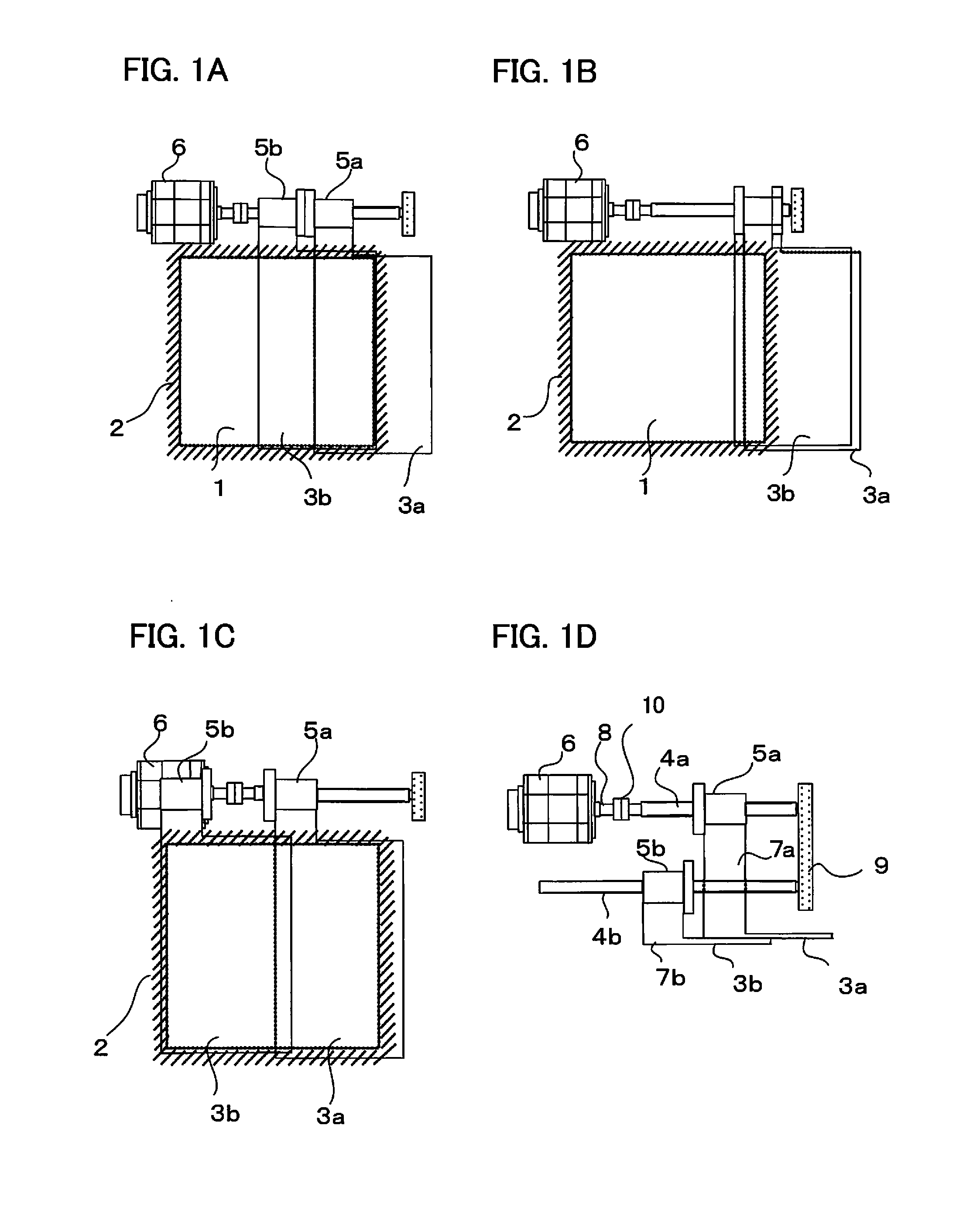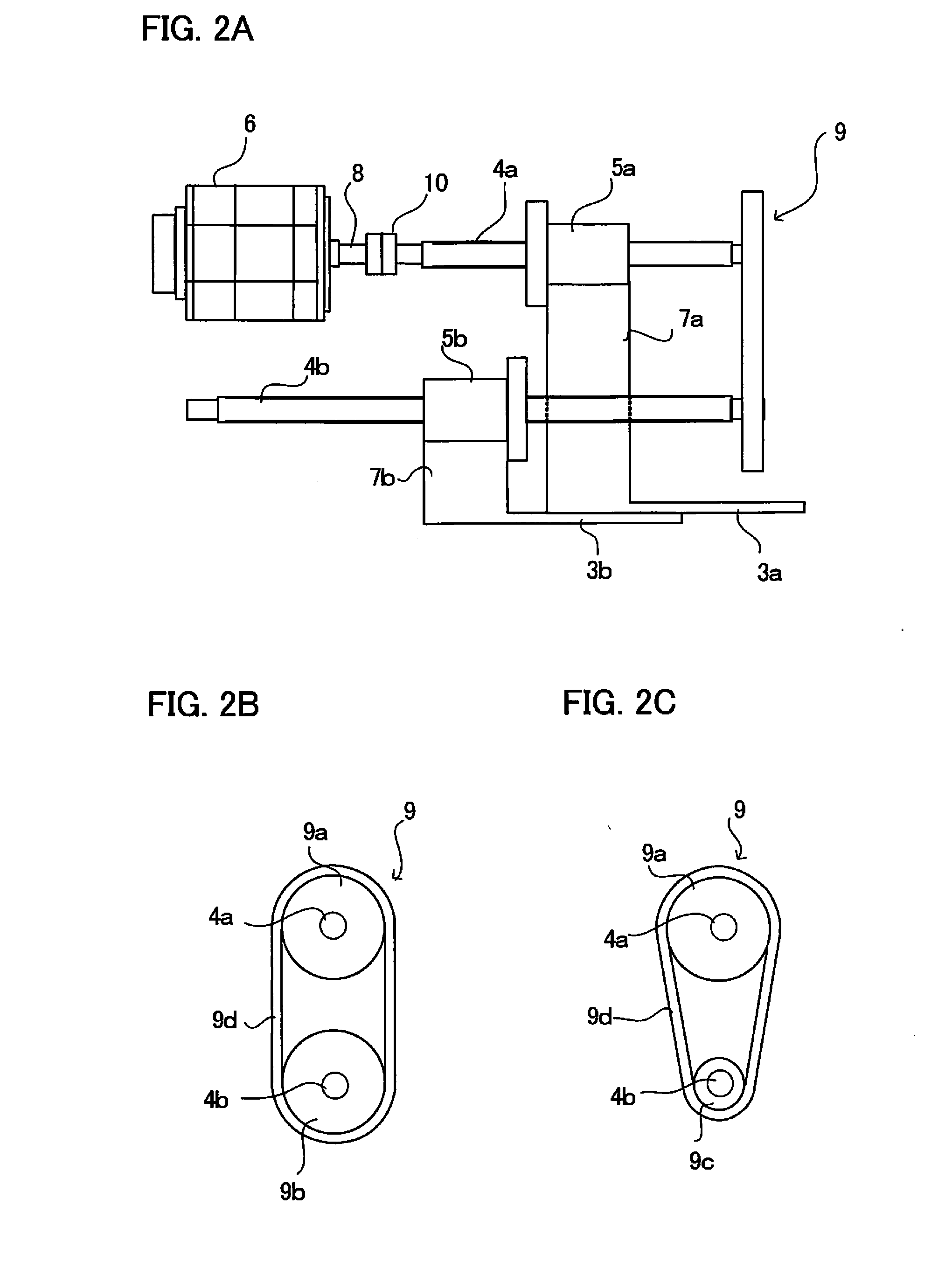Slide door of machine tool
a technology of sliding door and machine tool, which is applied in the field of sliding door of machine tool, can solve the problems of limited mounting space for the power transmission mechanism around the door, abrasion and failure of the pulleys and the wire, and achieve the effect of enabling automation, fast opening and closing of the door, and avoiding abrasion and damag
- Summary
- Abstract
- Description
- Claims
- Application Information
AI Technical Summary
Benefits of technology
Problems solved by technology
Method used
Image
Examples
first embodiment
[0028]FIGS. 1A, 1B, 1C, 1D are schematic diagrams each illustrating a first embodiment of the present invention. FIGS. 1A, 1B, 1C are front views: FIG. 1A illustrates a state where an opening is opened halfway; FIG. 1B illustrates a state where the opening is opened fully; and FIG. 1C illustrates a state where the opening is closed. Further, FIG. 1D is a plane view.
[0029]A machining space in which a workpiece is cut with a cutter is covered with a fixed cover 2, and first and second doors 3a, 3b for opening and closing an opening 1 provided in the fixed cover 2 is provided. Two ball screws, i.e., first and second ball screws 4a, 4b are disposed in parallel with each other on an upper side relative to the first and second doors 3a, 3b, and a first nut 5a and a second nut 5b are engaged threadedly to the first ball screw 4a and the second ball screw 4b, respectively. An extension member 7a of the first door 3a is fixed to the first nut 5a, and an extension member 7b of the second door...
second embodiment
[0041]FIG. 4 is a schematic diagram of a second embodiment.
[0042]In the second embodiment, a driving motor is provided for each ball screw instead of providing the power transmission mechanism. The other configuration is the same as in the first embodiment.
[0043]A motor shaft 8a of a first motor 6a is connected to a first ball screw 4a via a shaft coupling 10a with their shaft centers being aligned. A motor shaft 8b of a second motor 6b is connected to a second ball screw 4b via a shaft coupling 10b with their shaft centers being aligned. Except that the power transmission mechanism 9 is not provided, the other configuration is the same as in the first embodiment, so a description thereof is omitted.
[0044]A first door 3a is driven by the first motor 6a via the first ball screw 4a and a nut 5a. A second door 3b is driven by the second motor 6b via the second ball screw 4b and a nut 5b. Since the doors 3a, 3b are driven by independent motors 6a, 6b, respectively, stroke amounts, movin...
third embodiment
[0046]In the first and second embodiments described above, two doors are moved in the same direction so as to open and close the opening. However, in the third embodiment, two doors are moved in opposite directions so as to open and close an opening.
[0047]FIGS. 5A, 5B are schematic diagrams each illustrating a first aspect of the third embodiment: FIG. 5A is a plan view; and FIG. 5B is a front view. A first ball screw 4a is connected to a motor shaft of a motor 6 via a shaft coupling 10 with its shaft center being aligned with a shaft center of the motor. Further, the first ball screw 4a is connected to a second ball screw 4b via a power transmission mechanism 9. An extension member 7a of a first door 3a is fixed to a first nut 5a engaged threadedly to the first ball screw 4a. Further, an extension member 7b of a second door 3b is fixed to a second nut 5b engaged threadedly to the second ball screw 4b. FIGS. 5A, B illustrate a state where an opening is closed by two doors 3a, 3b. Wh...
PUM
 Login to View More
Login to View More Abstract
Description
Claims
Application Information
 Login to View More
Login to View More - R&D
- Intellectual Property
- Life Sciences
- Materials
- Tech Scout
- Unparalleled Data Quality
- Higher Quality Content
- 60% Fewer Hallucinations
Browse by: Latest US Patents, China's latest patents, Technical Efficacy Thesaurus, Application Domain, Technology Topic, Popular Technical Reports.
© 2025 PatSnap. All rights reserved.Legal|Privacy policy|Modern Slavery Act Transparency Statement|Sitemap|About US| Contact US: help@patsnap.com



